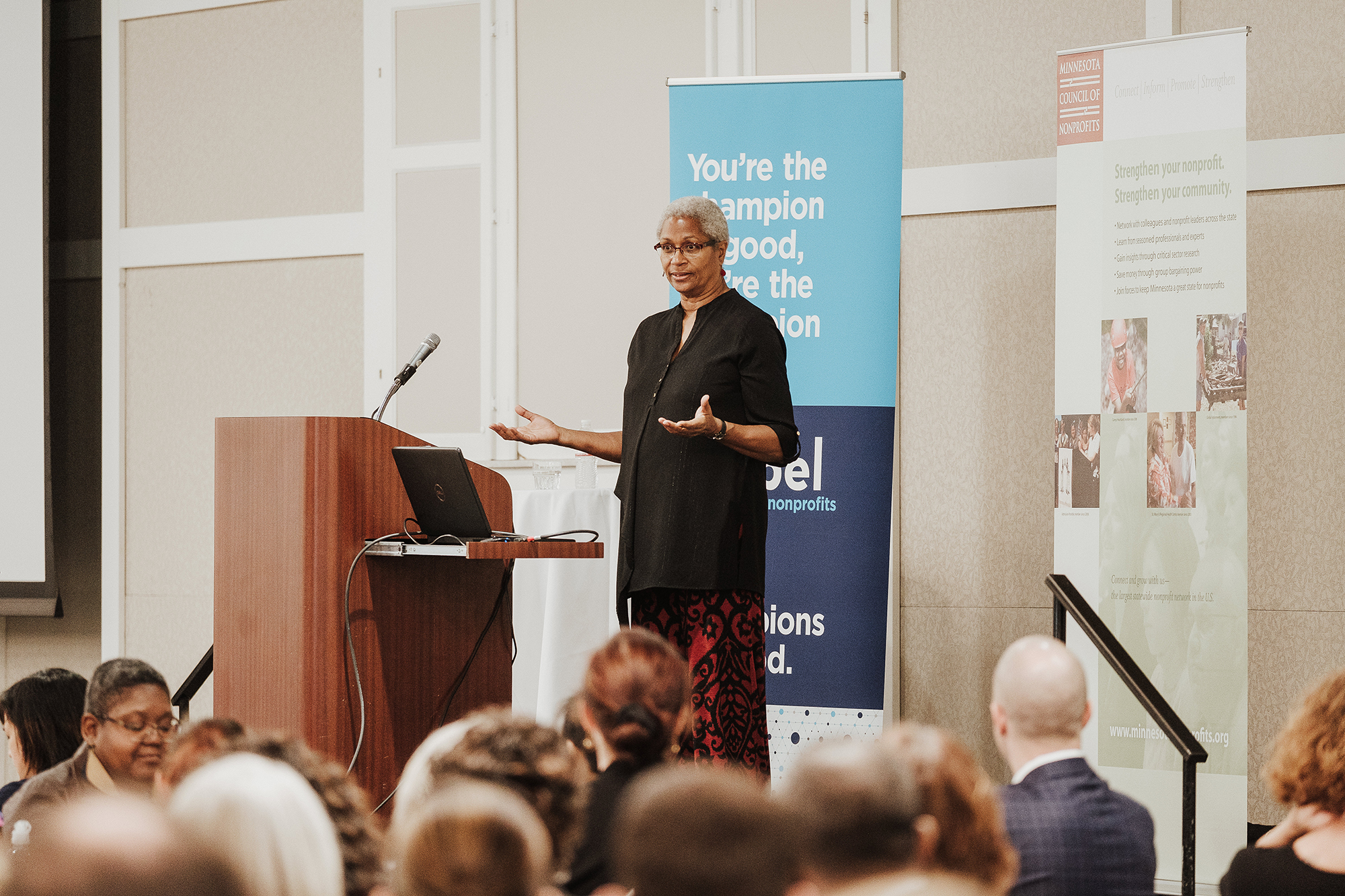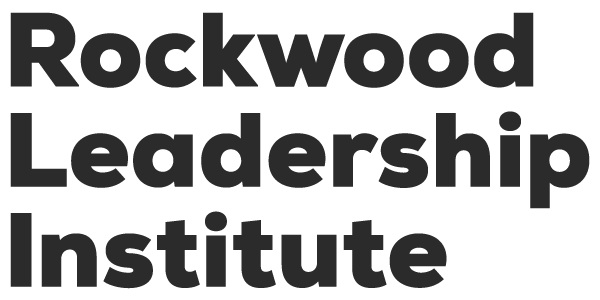This post originally appeared over at Propel Nonprofits’ blog. If you’re interested in starting a 32-hour work week at your organization, check out our how-to guide.

Hard Times to Lead In
“If I’m not well, we’re not well. If I’m not well, I can’t take care of my organization or community or family.”
Coming off our biggest event of the year – the Nonprofit Finance and Sustainability Conference – is always a reflective time for us. Not only were there 24 expert presenters speaking on 22 different topics, this year we had our biggest crowd of over 500 nonprofit leaders asking great questions. In addition, we welcomed Akaya Windwood, President of the Rockwood Leadership Institute, as our keynote from Oakland, California (you know jokes about our April blizzard were made).
Kate Barr introduced the aim of this year’s conference by discussing the many angles from which we confront change: within our communities, at a policy level, those external to the sector, and those happening within the nonprofit sector itself. When Akaya told a packed room of Minnesota nonprofit leaders that she slept 11 hours the night before and that her staff works 32 hours a week – and with increased productivity and organizational growth– she was met with dropped jaws for a sea of weary-eyed folks far below that rest quota. The response signaled how timely her message was.
Akaya argued that not only is it possible, but necessary, to invest in ourselves. The hopeful yet somewhat skeptical response she received makes me think this is another topic we’re better at nodding about than living out, especially in our Minnesota nonprofit culture. The reason we invited Akaya to speak is that all of us doing the hard work of leading through rapidly changing times have ramped up our sense of urgency. As Akaya said, “these are hard times to lead in.” Most nonprofit employees sit frequently with the people (or animals or environment) we’re letting down by not giving 100% of ourselves for a more just community, and our work feels especially important in the face of more restrictive immigration, turmoil in health care markets, sky-rocketing housing costs, growing economic disparities, and natural disasters caused by changing climate, to name a few.
No One Leads Alone
“This isn’t about self-indulgence and massages,” underscored Akaya. “If I’m not well, we’re not well. If I’m not well, I can’t take care of my organization or community or family. No one has ever led alone.” She urged that taking care of ourselves isn’t a luxury, but a necessity to offset the burnout endemic to our nonprofit sector. And caring for ourselves means more than just rest and relaxation, but rather, having time to reflect and seek purpose, delight, and wonder.
So how do we truly work to curb burnout, rather than navel-gaze at the issue? It’s one thing to talk about taking better care of oneself, and quite another to sit in front of a person who is modeling that behavior, with demonstrated success. Being in the room with Akaya, one felt an imperative to make a change rather than nod yes and think “that’d be nice!” Akaya’s work of creating a healthier culture at Rockwood Leadership Institute, and instilling a culture of self-worth and preservation to 7,500 fellows, is what living that value looks like.
Personally, I know I am not always, as Akaya urged us, living in alignment with the Minnesota I’m trying to create: one that is more reflective rather than reactive, that is gracious rather than impatient, that has time to listen rather than constantly be heard. I’m not good at prioritizing purpose over productivity, delight over deadlines, and wonder over what’s urgent.
Prioritize Purpose, Make Space for Rest
As Akaya said, if leaders are showing up to the office raggedy and exhausted and preaching the values of self worth, rest, and reflection, nothing will change. Rather than working harder to keep up with the quickening pace of change, true leadership will take the courage to invest in ourselves first, prioritize, and learn to say a gracious no so we can be fully present for the work of carrying out our missions.
So, as we continue to confront changes (see Kate’s previous blog) – from changes to FASB accounting standards to internal leadership shifts and beyond – I’d advocate we start checking in with ourselves more frequently. Kate asked us to think about what it means if Minnesota was applauded not only for being a vibrant, effective nonprofit haven, but also for having the healthiest nonprofits. Toward that end, I’ll borrow one last time from Akaya: close your eyes, ask what gives your work meaning, and go for a walk. The weather finally allows you to, and so do we.
You can track some other big ideas from the conference on Twitter by searching for #NPFinance18 – the energy and knowledge sharing reached trending levels! Photos from the event are on our Facebook page.

